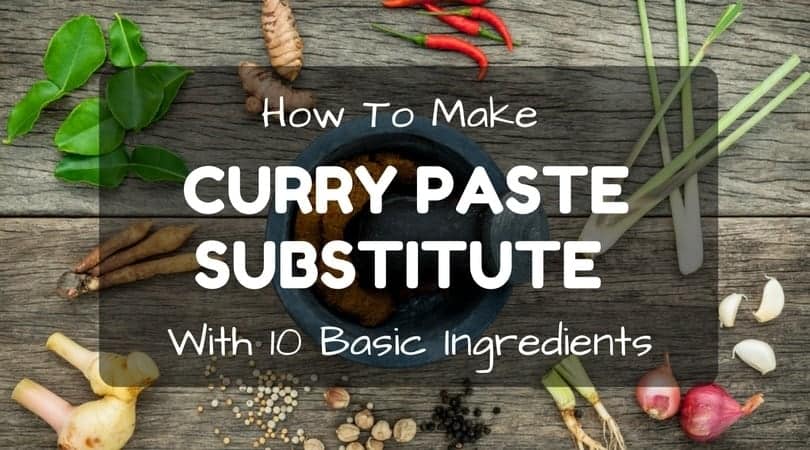Curry paste is a great ingredient that is often used in Asian cuisines. If you want to add depth and earthy flavors to your meals, adding a bit of curry paste will surely do the trick. But what would you do when you run out of curry paste and there’s no stock left at your local supermarket?
Since curry paste has a very distinct flavor, finding a substitute for it can be quite a struggle. But don’t lose hope just yet. You can easily make your own curry paste substitute at home with a couple of ingredients that’s frequently available in supermarkets.
Want to know how to make a curry paste substitute? Just keep on reading because I will be sharing a simple recipe that you can easily make at home using easy to find ingredients. You might even end up preferring this homemade curry paste over store bought ones!
More...
What You’ll Need
Before you start making your curry paste, you should first prepare these ingredients and materials at your kitchen.
Garlic
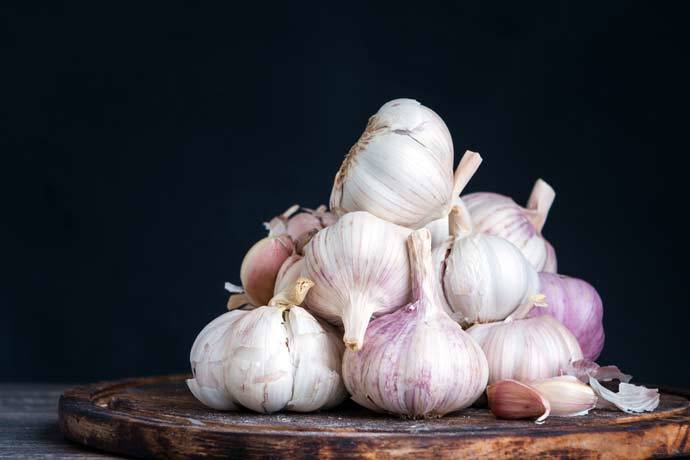
You will need three tablespoons of garlic to make an authentic tasting curry paste substitute. As you prepare your garlic, make sure that you chop each clove finely so that you will have an easier time mixing it with the other ingredients.
If you are having a hard time peeling each garlic clove, you can easily do so by using the side of your knife to press down on a clove to release it from its skin.
Shallots
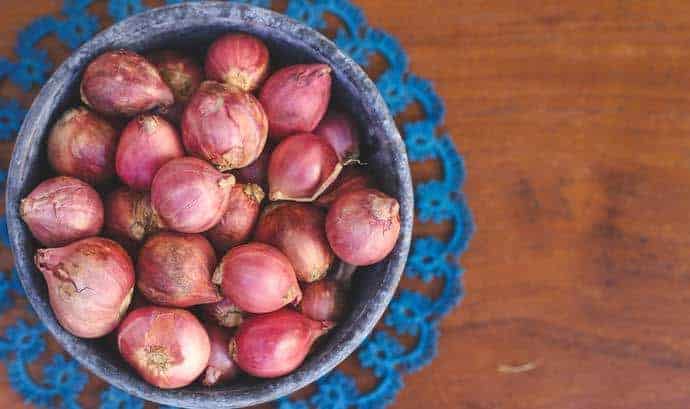
You can easily get some shallots from your local supermarket or farmer’s market. Curry paste has a very aromatic scent, which is the reason why you should use shallots instead of onions. For this recipe, you will need 4 cups of finely chopped shallots. Make sure that your shallots are clean before chopping them by rinsing them with water.
Lemon Grass

You will need three tablespoons of chopped lemon grass to add a faint citrus flavor to your curry paste. You can easily get lemon grass from the herbs section of your local supermarket. Before you finely chop your lemon grass, make sure that it is thoroughly clean by running it under water. When chopping the lemongrass, you should choose its purple parts for more aroma.
Galangal
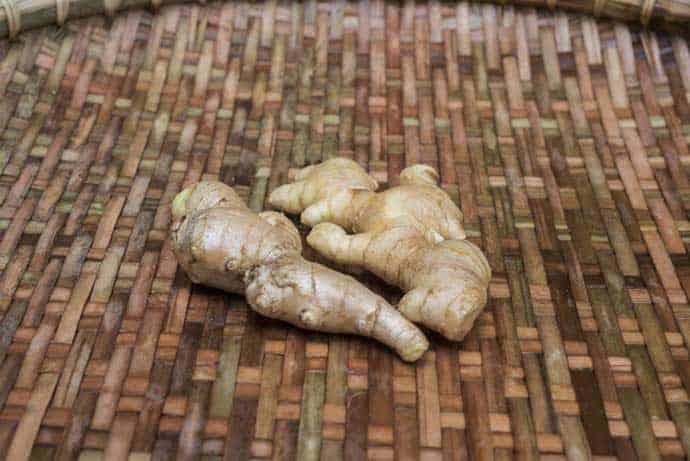
Galangal is a common spice used in Asian cuisine. It is very similar to ginger, so make sure that you are getting galangal when you go to the supermarket because they look remarkably alike. You will need a tablespoon of chopped galangal to make your curry paste substitute. Make sure that your galangal has been peeled properly before you chop it up.
When peeling galangal, you can use the blunt edges of a spoon to scrape its skin away.
Cilantro Root
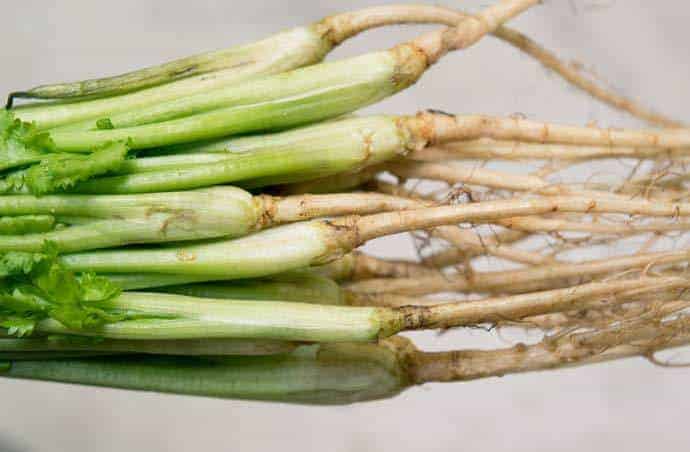
Cilantro root has a more aromatic flavor than the more commonly used cilantro stems. It can be a bit difficult to find cilantro root at supermarkets since most cilantros in supermarkets come in stems and leaves. You can, however, find cilantros with roots at farmers markets or Asian food shops. You won’t need much, only a teaspoon.
Kaffir Lime Zest
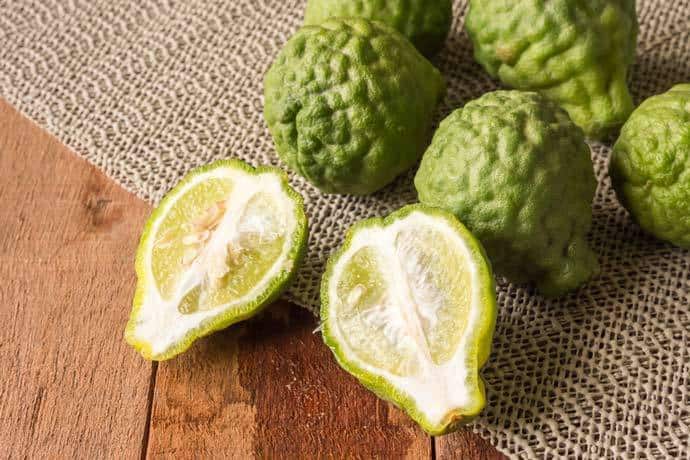
To add more citrus flavors to your curry paste, you will need a teaspoon of kaffir lime zest. Before you get the zest from the kaffir lime, make sure that it is completely clean. You can clean it thoroughly by running it under water. To get the zest effectively, you can use a cheese grater and lightly grate the lime against it to avoid getting the white parts under the zesty skin.
Sea Salt

You will need a teaspoon of sea salt to make your curry paste. I recommend using coarse sea salt since it helps with breaking down other ingredients included in this recipe during mixing.
Dried Chilies
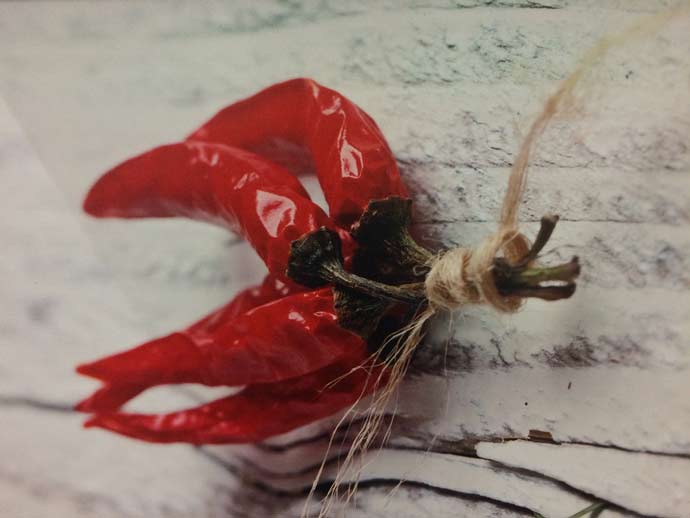
To add spice to your curry paste, you will need to prepare seven to fifteen pieces of dried chilies. When preparing your dried chilies, slice them up, and carefully remove the seeds. While doing so, it is advised that you wear gloves to protect your hands. After removing the seeds from your chilies, place them in a bowl of water to for a couple of hours to rehydrate them.
Shrimp Paste
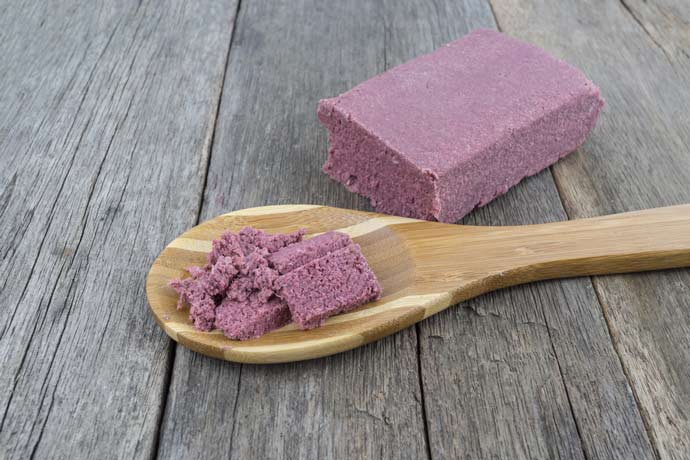
It is easy enough to find a jar of shrimp paste at your local supermarket. Don’t be deceived by its name, though, and shrimp paste isn’t literally made of shrimp. It’s actually made of krill that has been fermented for a couple of months. You won’t need much for this recipe; only a teaspoon will do.
White Pepper Corns
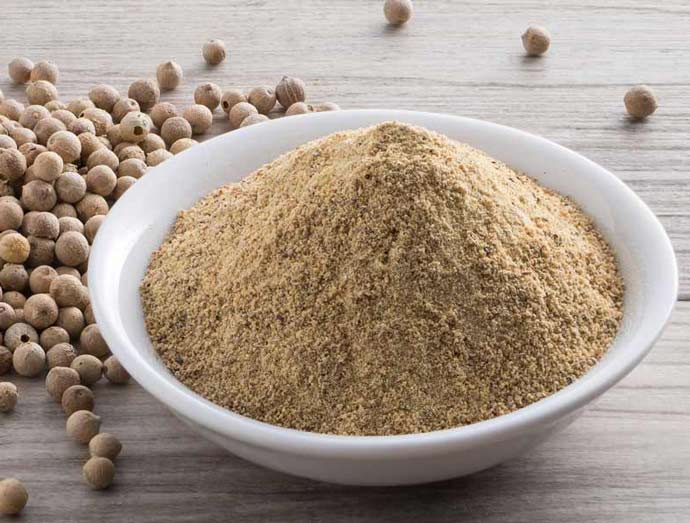
To add a peppery flavor to your curry, you will need a quarter teaspoon of white unground peppercorns. If the peppercorns you have available are already grounded, don’t fret. I only recommended whole white peppercorns because they unleash more flavors once cracked or ground.
Stone Mortar And Pestle
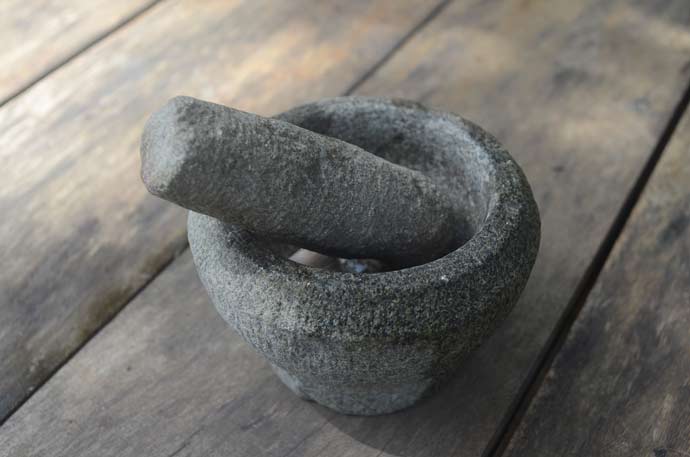
The only kitchen tool that you will need to make yourself a curry paste substitute is a stone mortar and pestle. Why stone? Since you'll be working with ingredients that are a bit hard to grind, you want something tougher. Using a wooden mortar and pestle will take more time and effort than stone ones.
What You Should Do
Once you have gathered your ingredients and materials, here are the basic steps you should follow to make your curry paste:
Step 1: Grind The Chilies
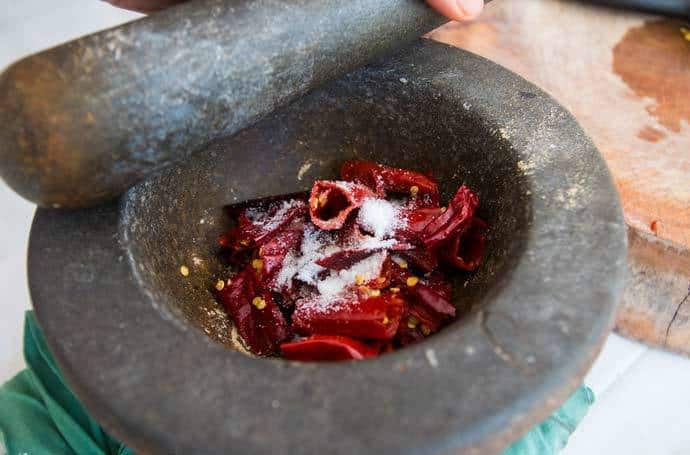
Via eatingthaifood.com
Remove your rehydrated dried chilies from the water you soaked it in, and blot it dry with a clean cloth. Once you have taken out the excess water from the chilies, you can now place your chilies in your mortar. Add the coarse sea salt to your mortar before you grind your chilies. The coarse salt will help grind the chilies tough skin into a thick paste.
Step 2: Add The Spices

Via eatingthaifood.com
After grinding the rehydrated chilies with the salt, you can now add your white peppercorns to the mix. Make sure that everything has been grounded well before you add in other ingredients to ensure that each spoonful of your curry paste will contain all the flavors of your ingredients.
Step 3: Add The Fibrous Herbs
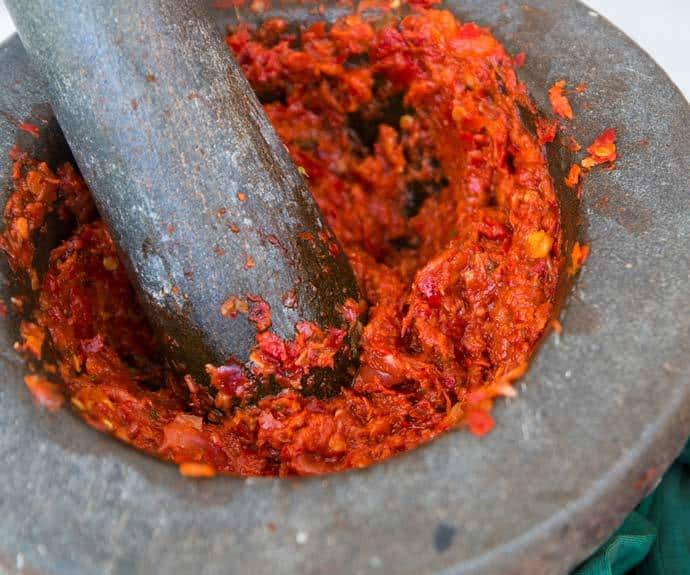
Via eatingthaifood.com
One you have finished with the spices, the next thing you'd want to do is add the fibrous herbs that harder to grind. These herbs include the lemongrass, galangal, cilantro root, and the kaffir lime zest. Make sure that you grind these herbs thoroughly until the whole mix has a pasty consistency with very few lumps.
Step 4: Add The Soft Ingredients
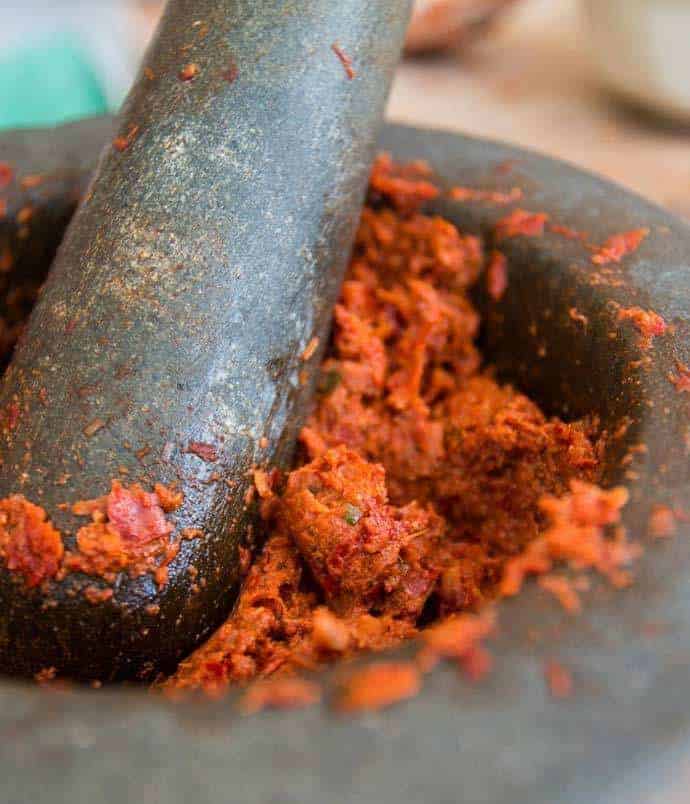
Via eatingthaifood.com
After grinding the hard ingredients, you can now add the shallots, shrimp paste, and garlic to the mix. Thoroughly mix and grind all the ingredients together with your pestle until the paste is thick and is free of lumps.
Step 5: Use Immediately Or Store
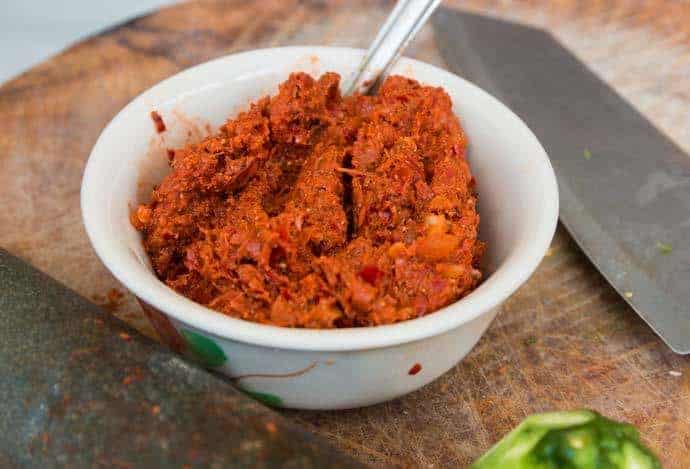
Via eatingthaifood.com
You can immediately use your curry paste right out of the mortar if you need to. But if you want to save it for later, you can store your curry paste for a week or so by placing it in an airtight container and putting it in your fridge. If you wish to make it last a whole lot longer, you can try freezing it, which can make it last up to a couple of months.
Pro Tips
You can use curry paste to add depth to all sorts of seafood dishes including fish, mussels, shrimp, and even clams. If you are planning to make roasted or steamed seafood dish with a curry flavor, you can easily do so by spreading an ample amount of curry paste to the fish, shrimp, mussel, or clam before you cook it. You can also use curry paste to add a spicy and earthy flavor to seafood soups by adding a dollop of it to your soup base.
You can make curry flavored sauces to use as dips or vinaigrettes for salads by using only a couple of teaspoons of curry paste. For every cup of sauce or vinaigrette you make, you can try adding two to three teaspoons of red curry paste for a nice aromatic and earthy flavor. You can continue to add more to taste depending on what you prefer.
Final Thought
Curry paste is a great ingredient that makes the simplest of recipes gain a complex flavor. Since it is made out of several herbs and spices, it can add great depth to all sorts of dishes including meat, poultry, and seafood.
Aside from adding flavor to whole meals, you can also use it to make sauces, dips, and vinaigrettes gain a more ethnic flavor with just a couple of teaspoons. Hopefully, from now on you will no longer worry about running out of store bought curry paste, especially since you now know how to make your own with only ten basic ingredients.
If you liked this article and would like to know more about cooking, please leave us your feedback in the comment box below. Until next time, enjoy!

